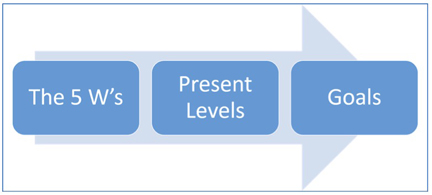Present Levels of Academic & Functional Performance
PLAAFP is another special education acronym that stands for “Present Levels of Academic Achievement & Functional Performance.” Simply put, Present Levels answer the questions: what can this student do and what does he/she know right now?
Early in the development of an IEP, the ARD committee should review the most recent evaluation information available on your child, such as the previous year’s STAAR test, other assessments, and classroom achievement. Then they will document their findings in a series of PLAAFP statements that focus on:
- Academic Achievement (PLAAFP) focuses on what specific kinds of academic information and skills your child has mastered – such as reading at a certain grade level, or performing certain mathematical alculations for example.
- Functional Performance (PLAAFP) refers to other areas of achievement that are not academic. It can include information about your child’s social skills, communication skills, and other activities of daily living (ADL).
It is important to note that the PLAAFP statements must be based on objective data, rather than teacher observations. The PLAAFP statements should include information about the impact of your child’s disability on how much he/she is included and pogressing in the general education curriculum (TEKS).
Why is this information necessary? The PLAAFP is the basis on which the ARD committee will write goals for your child’s educational year. It gives the ARD committee a starting place. If your child’s PLAAFP says he can read at the 2nd grade level, you know that his IEP goals should include reading at a level above 2nd grade. If her PLAAFP shows that she can add one-digit numbers, the new gol could be that she will begin adding two-digit numbers with or without regrouping. If the PLAAFP states that your child can perform a task with two prompts, an IEP goal might work toward performing that task with one prompt or even independently.
Once your child reaches high school, PLAAFP statements become an essential part of transition planning. Knowing the academic and functional skills your child possesses can help plan for his/her postsecondary goals.
What Parents Need to Know
- Don’t get overwhelmed by the data found in evaluation reports. If you don’t understand the results of your child’s testing, ask someone to sit down with you (prior to the ARD meeting) and explain the results. The diagnostician is probably the person best able to explain the data in a way you can understand. There are also resources online to help you educate yourself about testing and interpreting results.
- Make sure your child’s Present Levels are documented as statements reflecting current data – not just a checklist or “universal form” in the IEP paperwo
- Make sure your child’s Present Levels are measurable (you can count it or observe it). It doesn’t help you to know that your son’s reading “has improved” since last year or that your daughter’s spelling is “below grade level.” Ask the ARD committee to provide specific information about your child’s grade level functioning (for example, reads at a 6.2 grade level) or how consistently your child performs a certain task (for example, 3 out of 4 times attempted or 3 days out of 5).
- Evaluate your child’s PLAAFP from your own perspective and compare it to what the school has determined. What strengths does your child demonstrate at home or other places outside of school? How do you/your family help your child build on his/her strengths? You bring information to the ARD committee that no test or report can provide.
- As you consider the PLAAFP, keep your long-term goals in mind. Do you envision your child living independently or semi-independently after high school? Will he work? Will she drive a car? What about a social life? Your child’s Present Levels and subsequent IEP goals should always have those future, long-term goals in mind.

ESC 20’s Progress in the General Curriculum – IEP Annual Goal Development Q&A


